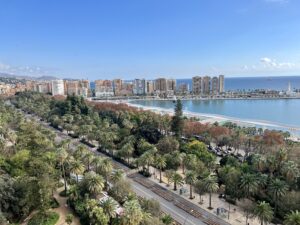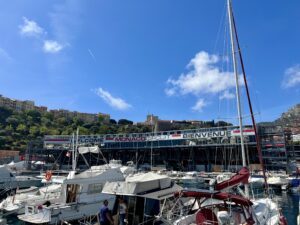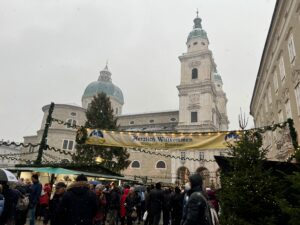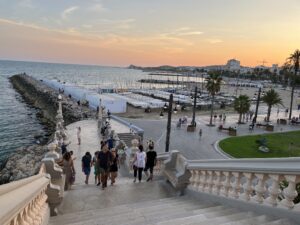After two nights in Cádiz, we drove back to the Sevilla1Seville is pronounced Sevilla in Spain airport to return the rental car. We hailed a cab to get to our hotel and while our room wasn’t ready for check-in, we knew it was going to be hot and toasty while visiting Sevilla. We wrote about the incredible food and drink of Sevilla here, so this post is focused on staying in Sevilla and seeing the sights around the city.
Staying in Sevilla
A quick ride from the airport and down a few narrow streets that you couldn’t pay me to drive on, we arrived to our hotel, Los Seises Sevilla. It was a Marriott property and we were pleased with it.
Los Seises Sevilla
One criteria for staying in Sevilla was a hotel with a pool and Los Seises Sevilla knocked it out of the park. Aside from having a limited number of lounge chairs, the pool area was very comfortable and drinks from the rooftop bar were excellent. Tip: get their mojito. Both Nik and I had several over the course of two days by the pool.

The hotel was pretty modern looking with a bar and seating on the main level. Our room was quite comfortable and they left us a bottle of wine for my birthday. The highlight of the room was the private outdoor area. Thankfully it had a sun shade hanging above otherwise it’d be scorching hot to sit out there.
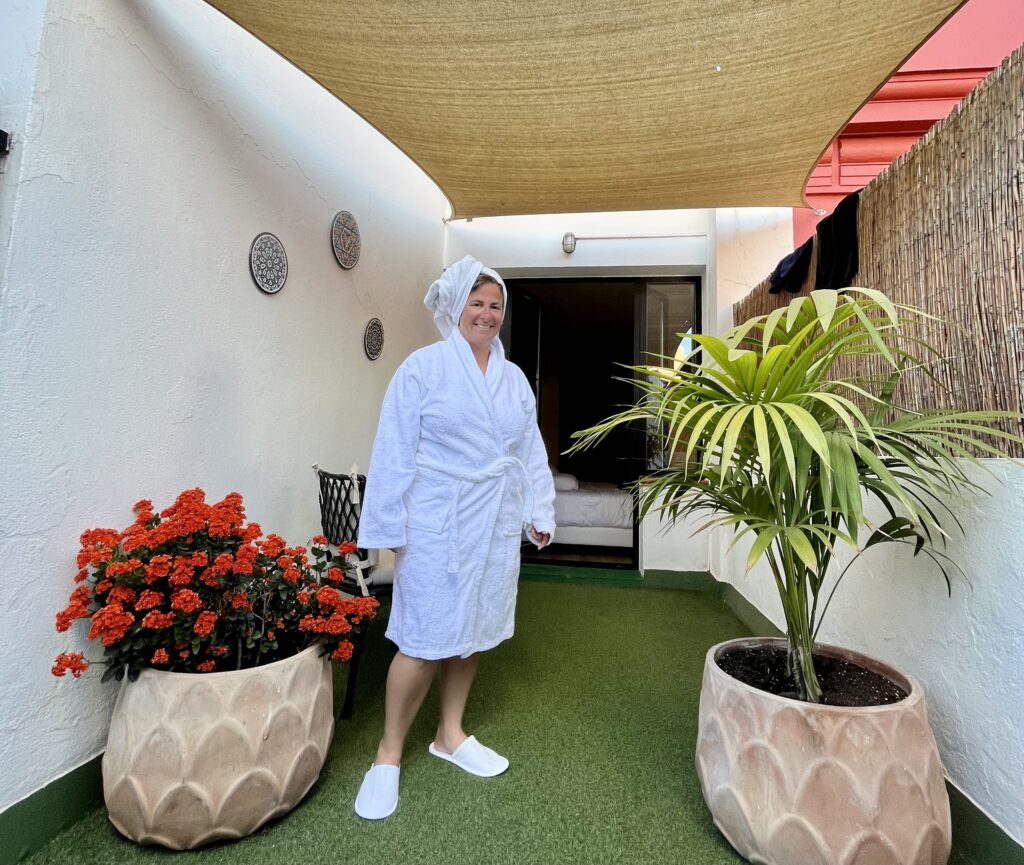
Sightseeing in Sevilla
Sevilla is the capital and largest city of the Andalusia region of Spain and the fourth largest city in Spain. While I feel we covered a lot of ground in our two days visiting Sevilla, you could probably spend more time there and not run out of things to see and do. In one day we managed to see three of the top sights: The Royal Alcázar, Catedral de Sevilla and Plaza de España.
Related: Recapping our Eating and Drinking in Sevilla
The Royal Alcázar
It is highly recommended to book tickets (13€/ticket) in advance of touring the Royal Alcázar of Seville. We booked for 9:30 to beat some of the crowd, and the plan definitely worked in our favor.
For Game of Thrones fans and viewers, The Royal Alcázar was used as a location for various Dorne scenes.

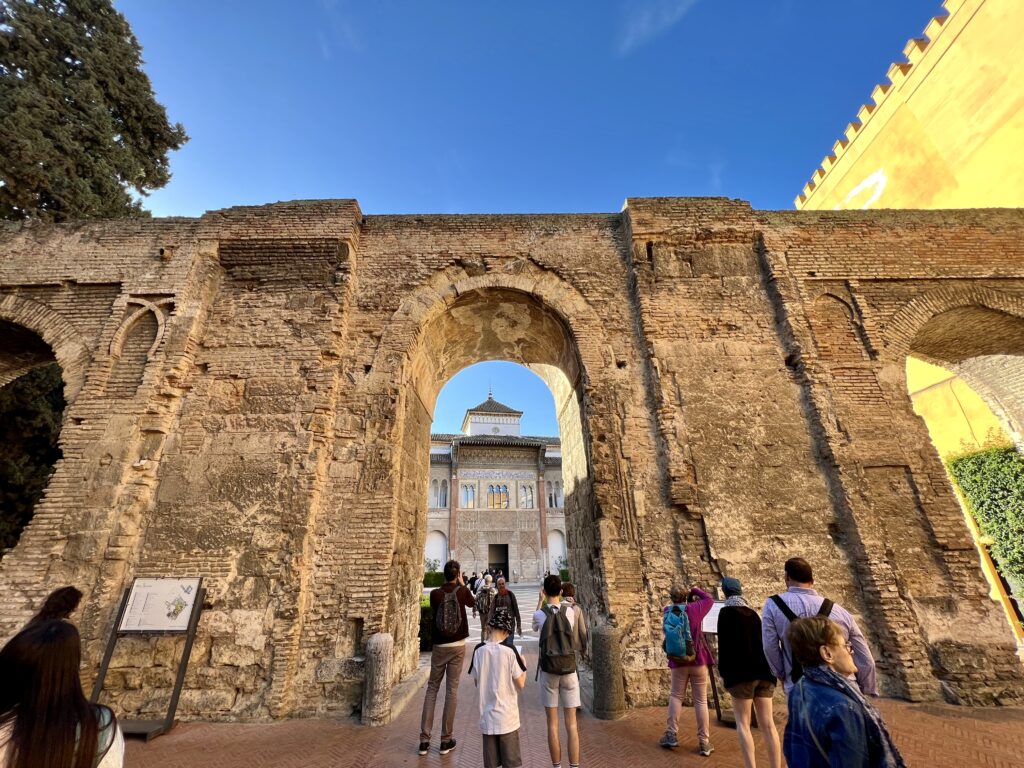
Registered in 1987 by UNESCO as a World Heritage Site, the Alcázar of Seville was founded in the early Middle-Ages and is a royal palace. It is still occupied by the Spanish Royal Family when they visit Seville.
The buildings and grounds are very expansive and you can easily get lost walking around and circling back. Since its control has changed over the years, the architectural styles range from Muslim and Moorish to Christian.
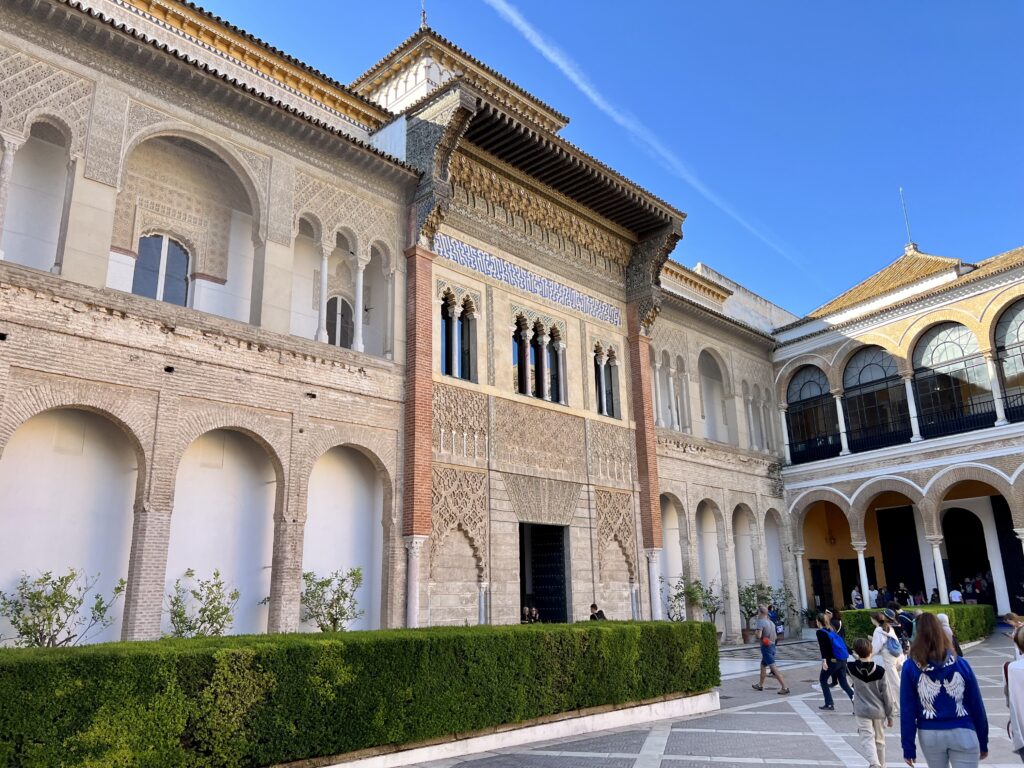
During our visit, the two main highlights for me were the diverse range of tile designs and patterns, as well as the beautiful gardens.

One of the first areas you see after entering is the Patio de Las Doncellas, meaning “The Courtyard of the Maidens.”2A reference to the apocryphal story that the Moors demanded an annual tribute of 100 virgins from the Christian kingdoms of Iberia.
Another special area is the Gypsum Courtyard, the oldest garden space preserved in the Alcázar.
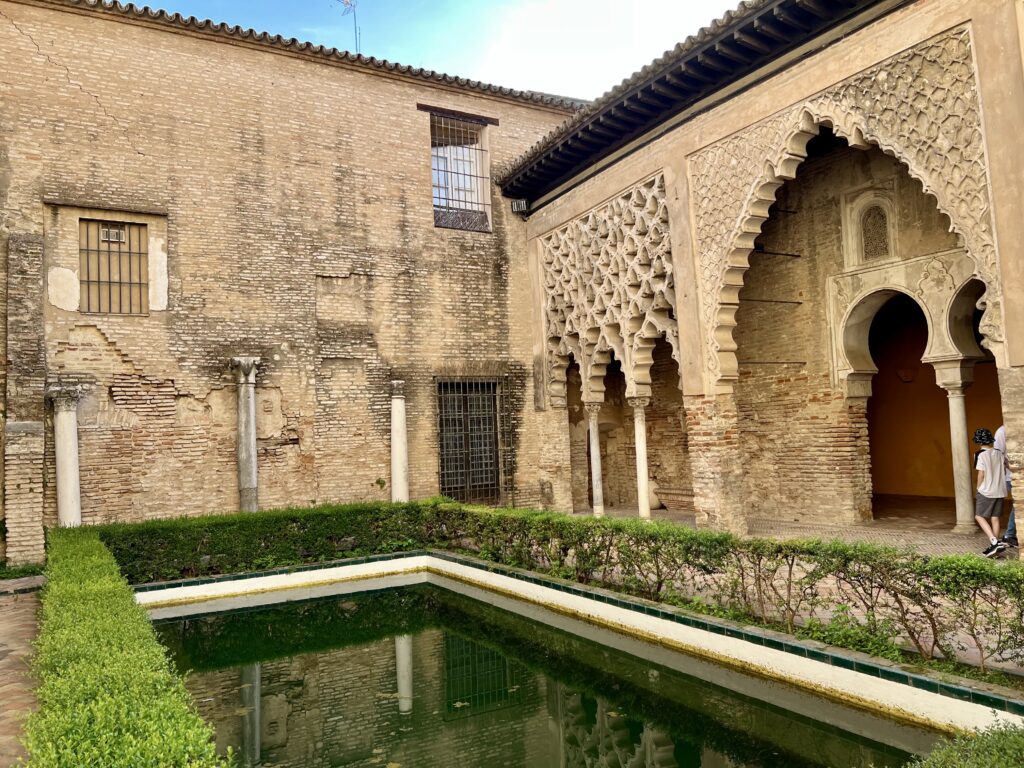
Walking around the Alcázar, you notice the grand designs and numerous archways. The rooms flow into each other and is highlighted by the gates3Can you imagine how this is built way back in the day? Amazing detail. to the Ambassadors Hall and it’s very stunning cupola.


As you make your way towards the gardens, you can view the Maria de Padilla Bathrooms, nestled below the Alcázar. This location was used in Game of Thrones.

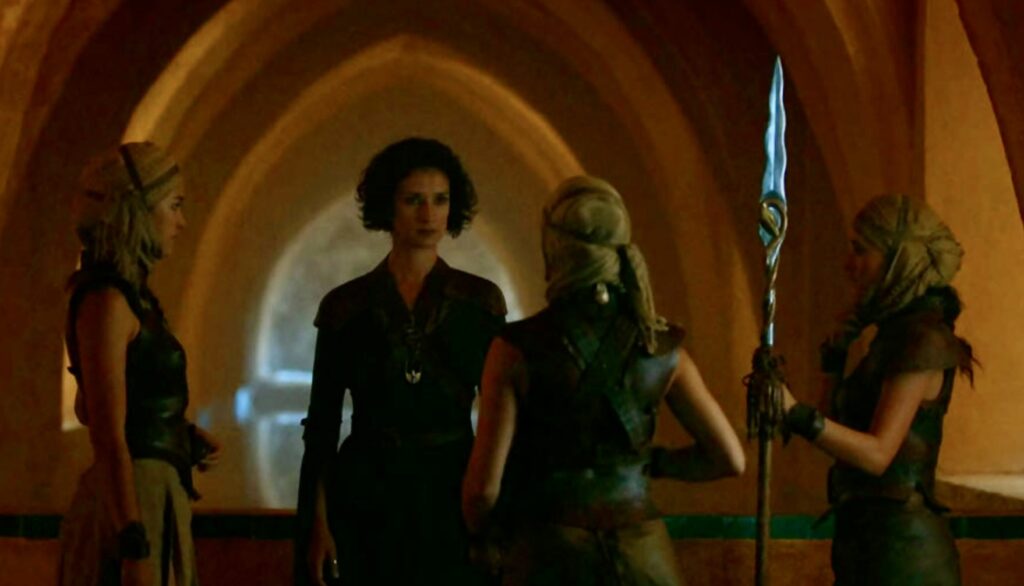
The gardens of the Alcázar are beautiful and walking through them was my favorite part of the visit. The lush greenery, fountains and ancient walls were really impressive. This area was also featured in Game of Thrones.


The Grotto Gallery is another main attraction in the garden. The old wall doubles as a covered corridor providing amazing views out to the garden and of the full wall that lines a large portion of the area.


Catedral de Sevilla
Across from the Alcázar is the Catedral de Sevilla. There are two different types of tickets offered and again, it’s recommended to buy tickets ahead of time. We bought entry for 11€/each to see the cathedral and have access to the Giralda, its belltower. The other ticket offered is a guided tour and includes access to the rooftop.
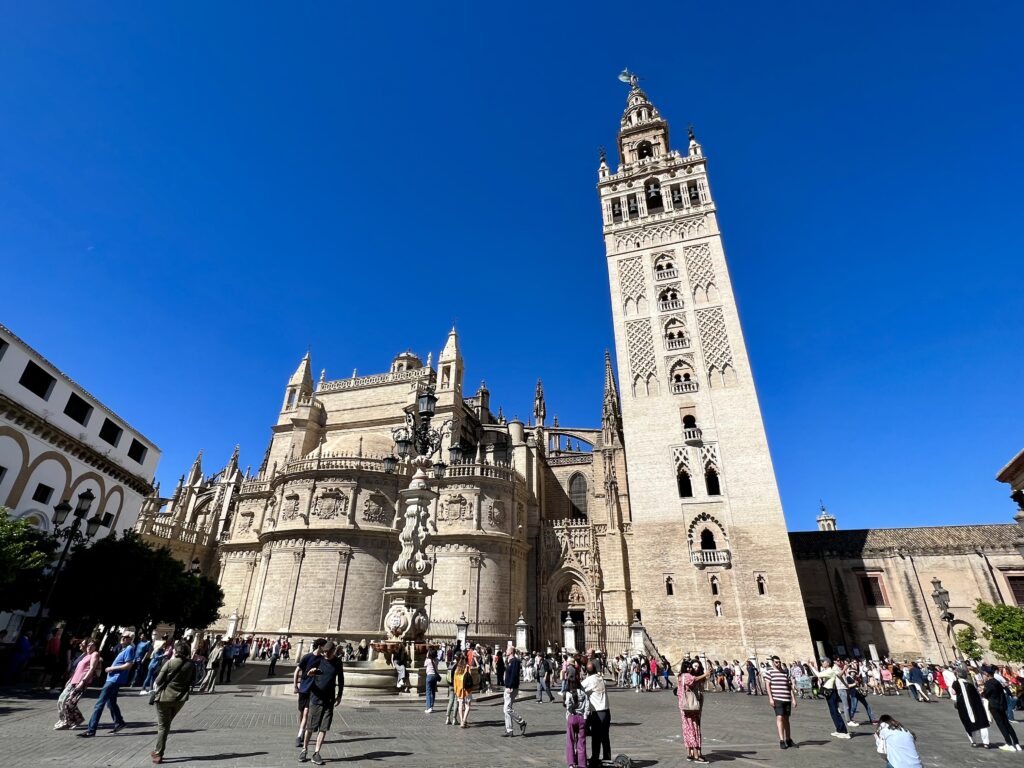

The Cathedral is one of the largest churches in the world as well as the largest Gothic church. One of the main attractions is the tomb of Christopher Columbus.


There is some controversy surrounding this tomb and whether it’s really his body. Columbus was first laid to rest in Valladolid, Spain in 1506 where he died. Shortly after he was moved to Seville by orders of his brother Diego. Then in 1542, the remains were again moved to what is now the Dominican Republic, where they remained for a couple of centuries.
Spain lost control of the Dominican Republic in 1795 and the remains were moved again to Havana, Cuba. 100 years later, they made their final voyage back to Seville, and placed in the cathedral.
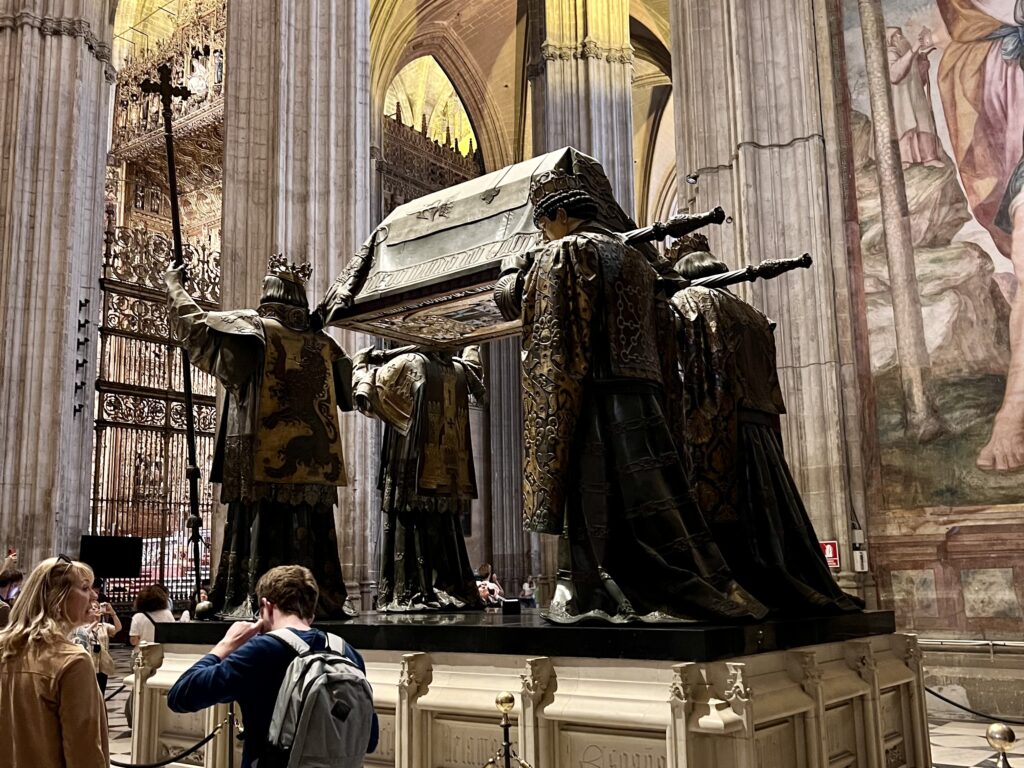
After all of that, in 1877 a box was discovered back in Santo Domingo inscribed with the words “The illustrious and excellent man, Don Colon, Admiral of the Ocean Sea.”
That box is now contained in the “Faro a Colon” Lighthouse in Santo Domingo. Despite examinations and a DNA test of the remains in Seville, the question remains somewhat unsolved or completely resolved, depending on who you ask.
Views from the Belltower
The climb up to the belltower was worth the effort for the views of the city, including a view of the Alcázar and even a view to our hotel pool! It was tight quarters at the top to look out but the staff did a good job to keep people moving in one direction. The bells even rung while we were at the top.

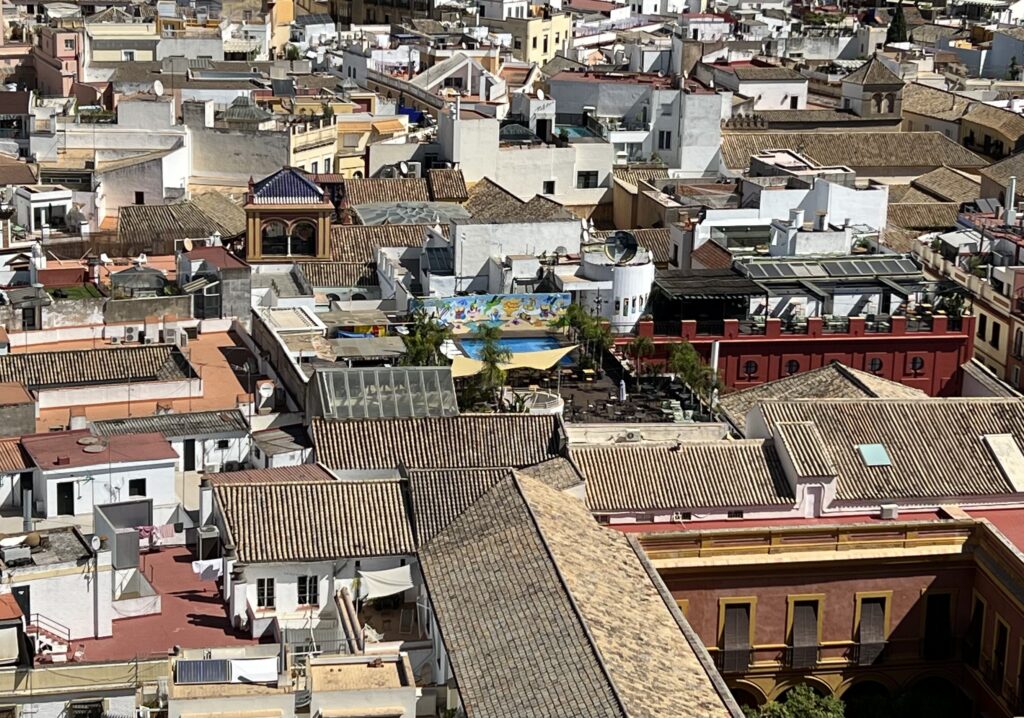
Plaza de España
A short walk from the Cathedral and Alcázar is the beautiful Plaza de España. It was built in 1928 for the Ibero-American Exposition of 1929, a world’s fair held in Seville. The Moorish Revival style of architecture is all over this complex and I regret not taking closeups of some of the tile designs.
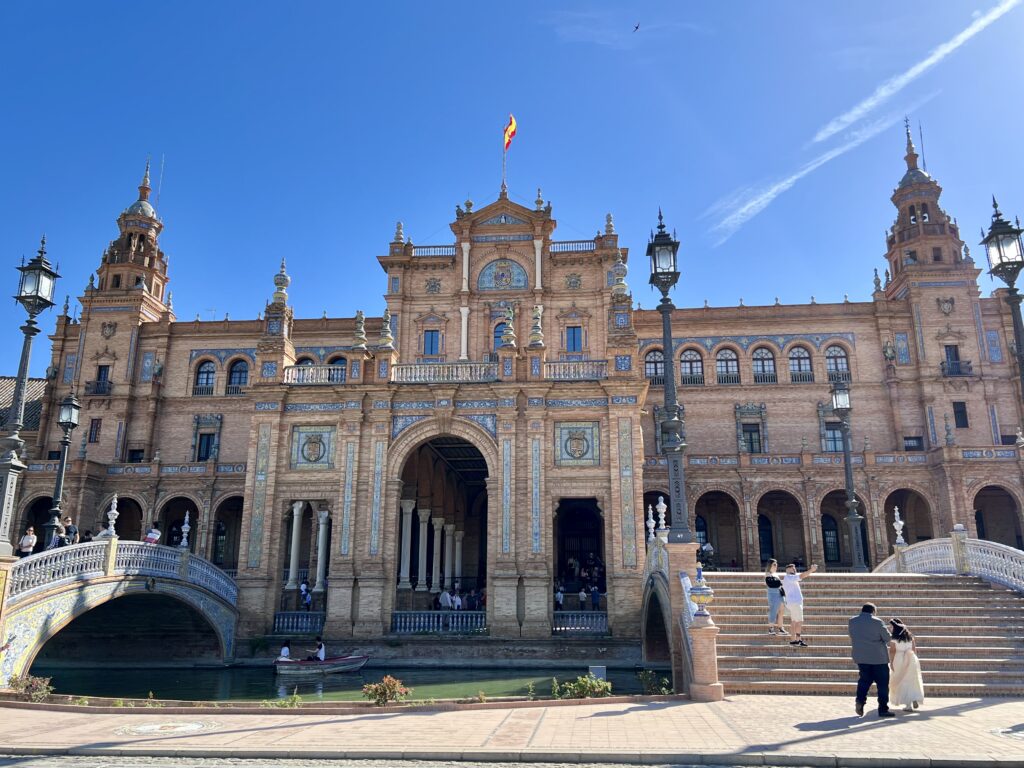
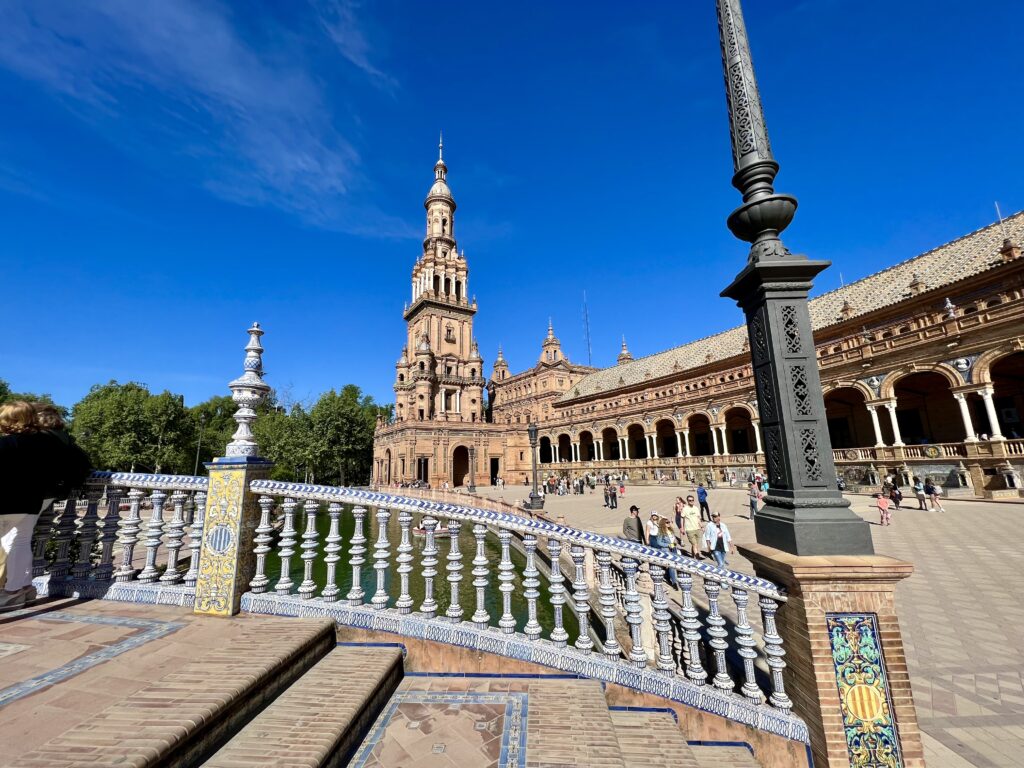
The complex is a huge half-circle with four bridges that cross the moat, making it one of the most photogenic places in the city. You can also rent a row boat and ride through the canal, but we opted not to.

Setas de Sevilla
One newer structure in the city is Setas de Sevilla or “Mushrooms of Seville” for loosely resembling mushrooms.
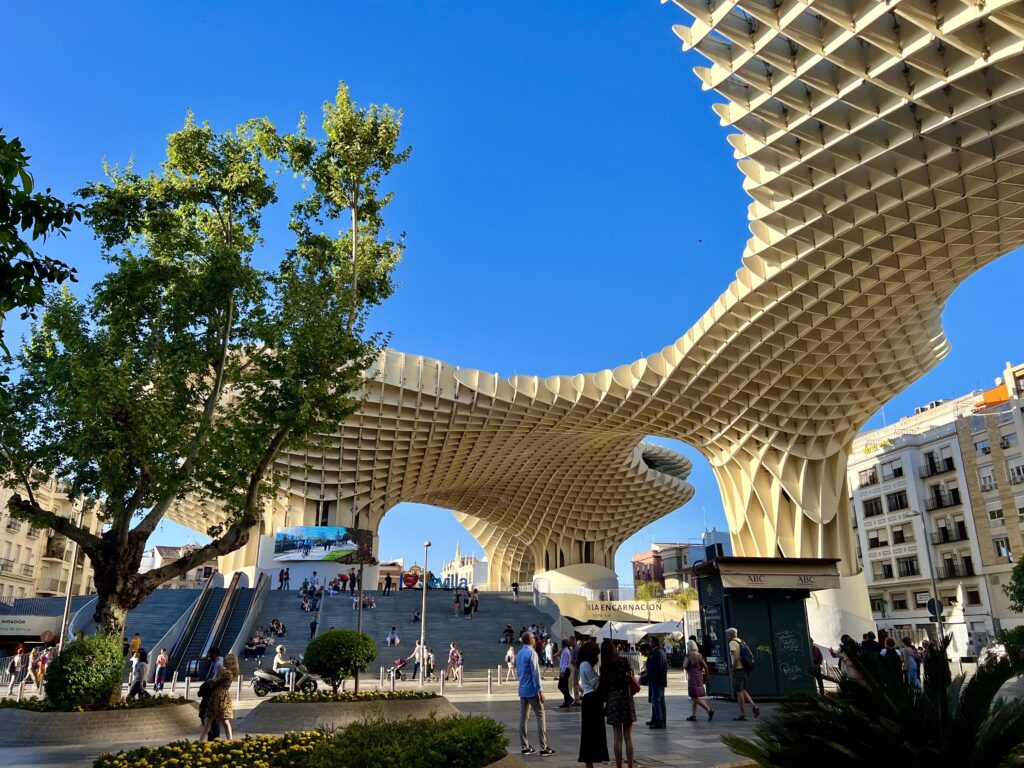
Initially titled Metropol Parasol, it was selected from a city-sponsored competition and completed in 2011. A predominantly wood structure it has a panoramic terrace (for a fee) that gives you views of the city. We didn’t go for the views, we just walked through the area and I found it pretty underwhelming.
We’ll be Back
Overall, we really enjoyed visiting Sevilla and exploring its rich history. I absolutely loved the numerous styles of architecture. We visited the Royal Alcázar, Cathedral and Plaza de España all in one morning which Nik and I highly recommend. If you’re there in spring (or even summer) it gets hot and going early ensured we would be done before it got too sweltering.
Have you been to Sevilla? What did we miss seeing?

